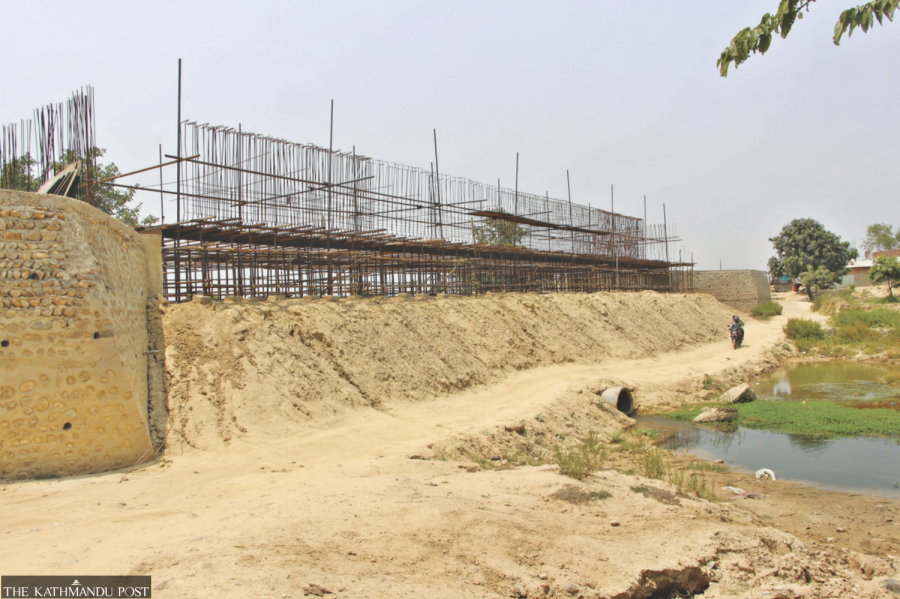Money
Capital expenditure growth enters slow lane after Covid
In the past four years, the average capital spending has remained at 60 percent, demonstrating the slow pace of economic and development activities.
Krishana Prasain
Nepal has one perennial problem: low spending on capital budget.
The last fiscal year, which ended on July 15, saw the capital expenditure of Rs191.73 billion of the Rs302 billion allocation. This translates to spending only 63.47 percent.
In the last four years, the average capital expenditure has remained at 60 percent, which demonstrates how slowly development is happening. Due to low spending, the economy has slowed down, forcing millions of Nepalis to seek their fortune abroad as the country is not generating enough jobs.
Economist Chandramani Adhikari said the problem begins right from the start.
“The budget is announced without preparation. The process of selecting the projects is haphazard. Then, the budget is allocated for those projects without assuring the financial source,” he said.
“There are no proper designs, detailed project reports and environmental impact assessment.”
The projects that are outside the procurement plan or annual plan are included in the budget.
“Then, there is a lack of coordination among the government bodies while implementing projects. The result is time and cost overruns,” Adhikari said.
In 2020, the killer Covid pandemic shook the world, without sparing Nepal. The viral disease prompted several lockdowns, and projects were halted for a long time. Post-Covid, the demand for critical projects like health, roads and other infrastructures increased, providing hope that the economy would mobilise massive capital and generate jobs.
The outcome was pessimistic. The government has not been able to spend more than 60 percent of the capital allocation.
The report of the Financial Comptroller General Office shows that capital expenditures, which were an average of 70 percent during the pre-Covid period, deteriorated to an average of 60 percent during the post-Covid period.
According to the report, capital expenditure was at 63.47 percent in the last fiscal year, which marginally recovered from 61.44 percent in the previous fiscal year, 2022-23.
It was 57.23 percent in the fiscal year 2021-22 and 64.6 percent in 2020-21. During the peak Covid period, the capital expenditure was at 46.34 percent.
Before Covid-19, the capital expenditure was 76.93 percent in 2018-19.
In 2017-18, it increased to 80.77 percent, from 66.92 percent in 2016-17 and 59.01 percent in 2015-16.
Some experts say there is a monopoly of a few contractors who win bids on most critical projects. They do not start work on time after getting a 20 percent initial payment.
“It’s obvious that the Nepali contractors lack financial, technical, and institutional capacity, including labour,” said Adhikari.
The delay means projects become costly. Adhikari said that most of the projects' costs have gone up by more than six times.
“We lack accountability, and no one is responsible for increased costs.”
The Public Expenditure Review Commission of the finance ministry, led by economist Dilli Raj Khanal, in a report submitted to the ministry in January 2018, pointed out several flaws like implementing projects without proper planning and preparations, disregarding government standards, and inappropriately prioritising projects as the primary reasons for the delays in the completion of development projects and poor utilisation of capital expenditure.
The country’s private sector is attempting to inject capital into the economy, but the government still plays a lead role in investing in infrastructure and public utility goods. Slow and inadequate capital expenses impede development activities. Analysts say this not only hampers job creation but also affects people’s incomes.
Furthermore, last-hour exhaustion of the capital budget also leads to poor-quality construction work. Short-lived roads, bridges, and other infrastructure waste the state’s resources and put people's lives at risk.
Capital expense is also considered the primary source of liquidity in the banks.
An official at the Financial Comptroller General Office said the decline in capital expenditures after Covid-19 was due to a slowdown in the economy.
Various other factors result in poor spending. Government officials said that sometimes, the budget allocated to one multipurpose project is not spent in the first year and is transferred to another project.
The slowdown was evident after the government failed to pay contractors.
This fiscal year, contractors stopped working on most of the projects after the government failed to pay them.
“That’s the serious issue,” said Rabi Singh, president of the Federation of Contractors Association of Nepal.
“Today, we met with the newly appointed finance minister Bishnu Poudel, and he is positive about sorting out the issues.”
The government says it has to pay around Rs20 billion to the contractors.
“The figure, however, does not match our calculations,” said Singh.
The government owes contractors Rs45 billion after releasing Rs15 billion on July 15, the end of the fiscal year.
He said the main problem is there needs to be funding guarantee for the ongoing 2,000 projects amounting to Rs585 billion.
“The frequent changes in government shift the priority of development projects. This is a big problem.”




 6.12°C Kathmandu
6.12°C Kathmandu














